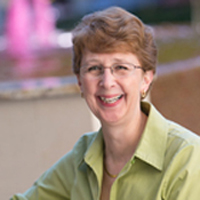Dear readers, those of you who have read my blog know that I share my personal experiences to illustrate concepts, to share a laugh and a lesson learned, to ultimately support and encourage stronger and more satisfying relationships. I have never been a fan of the let it all hang out genre, as I believe there needs to be a certain decorum on which you can count when you visit. That being said, what I share today is so important that I ask you to stay with me to the end of the post and to make sure you take the time to take care of yourself.
********************
As I read stories of breast cancer survivors, I am happily reminded of the tremendous advances that have been made in treatments over the past few decades. That optimism is tempered, however, by the large numbers of women who just don’t bother with mammograms. These simple exams can make a difference in how early the disease is detected and how successfully it can be treated.
Just about two years ago, my dear hubbie and I had to become educated about a potential health issue that appeared during my yearly screening. I alluded to it here, but I feel compelled to share more fully today as an encouragement to any woman who thinks that she does not need (or want) regular breast exams.
According to the American Cancer Society,
Breast cancers found during screening exams are more likely to be smaller and still confined to the breast. The size of a breast cancer and how far it has spread are some of the most important factors in predicting the prognosis (outlook) of a woman with this disease.
Consequently, they recommend regular exams with an eye towards early detection.
I have been a fan of that program (not to be confused with being a fan of the actual mammogram itself) and have had yearly check-ups for quite some time.
Can you come back? There’s something unusual.
Almost two years ago, I had my annual “squash-a-gram” (as I fondly call the tests). The radiologist saw something “unusual”, and I was asked to return for another spin in the “just how flat and far can you twist before the patient cries ‘Uncle!’” machine. I did return, and yes indeedy, there was a cyst on my right side that just didn’t belong there. I returned to the hospital before Thanksgiving to have the cyst aspirated. The pathologists took a look, and things weren’t quite as typical as they should be.
Next stop: Surgical Consult
My doctor then sent me for a surgical consult. The surgeon said I did not have breast cancer and while there are no standard early detection markers, such as with colon cancer (a polyp can indicate cancer formation year/s down the road), he said I was one of the “fortunate few” who seemed to have had a sort of warning signal:
Apparently, women past childbearing years typically do not have cysts. I did.
Typically, if a cyst exists, it is round. Mine was not.
Typically, the fluid removed from the cyst tests ok. Mine had indications that something was off.
The nuclei of the tested cells “stained dark”, meaning there was faster than normal dividing activity (similar to what happens with cancer cells: they have a tendency to divide/grow quicker than normal cells, I believe). The lab results came back as “atypical”. To understand what that means, you have to view the scale of measurement, which goes something like this: 1-benign, 2-atypical, 3-a big word I don’t remember, 4-malignant, 5-some other word that was even scarier than malignant. Yes, I know that these are not the correct medical terms, but this is how they sounded to me.
What he did say I had was a Ductal Papilloma. (Sounds like words to a 50’s dance song, doesn’t it? “Let’s do the Ductal Papilloma!”) Imagine a tube (that is the duct) and something that looks sort of like a small tree growing from an inside wall. That is the papilloma. It may stay like that (benign), or it may progress, so that the papilloma develops a cancerous spot. That then develops into more cancer cells that are attached inside the duct. Eventually, those cancer cells make their way through the duct walls and into the breast tissue and beyond, especially if undetected, and then you have a real problem.
Options: Would you like Door #1, #2, or #3?
The doctor proceeded to go through my options, the first of which was to do nothing and just wait and see if anything develops. I feel compelled to ask: Does that really appeal to any patient with whom the doctors speak? I’m thinking if you are the ostrich type, maybe. That is definitely not me. Let’s see: So I can wait to see if it does indeed develop into cancer, then we’ll tackle that? No thank you.
My next option was to have a biopsy, where they use bigger needles and suction to biopsy some of the tissue of what remains of the cyst. Let’s see…I have this image of Bob the maintenance man coming at me with these big needles attached to a ShopVac, saying, “Just don’t move, this won’t take long”, and leaving me with a new fashionable “Swiss cheese” look. Ok, I know it wouldn’t be the maintenance guy, but still. The thin needle the doctor used the first time while I was very awake and aware (but with a local anesthetic) was enough for me.
Let’s move on to door number three. The doctor could perform a biopsy, removing the cyst tissue and a little around it as well, I think. (Please remember that I am not a scientist or doctor, and that while I do my best to be accurate, I am relating my story to encourage you to talk to your doctor and schedule regular screenings.) The tissue would then be sent to the lab for testing.
The doctor thought at this point that the sample would come back benign, and the important thing is that the papillomas would be gone. The doctor said that it could be done right away, or in a few weeks or months, whatever my decision (again, what, me wait?). Dear hubbie and I had already discussed this, and so I opted for surgery, as soon as they could schedule it, which was the beginning of January 2010. It was day surgery, and I would be out of the hospital in a matter of hours, and back to a pretty regular schedule shortly thereafter.
The end result and a call to action
My scare, which thankfully, turned out to be benign and of not much consequence, still leads me to sound a note of warning and hope to all my beloved sisters in this world:
The cyst that the mammography showed was only about 1/2″ around. It was just not big enough to be apparent during a standard self-exam, nor could the doctor detect it during her exam. It wasn’t until the mammography and follow up ultra sound that it appeared, and was shown in all its shapeliness.
So dear readers, if you were wondering today what you can do to show your friends and family how much you love them, here is one answer:
Schedule and attend your yearly mammogram.
Question: Do you take time to take care of yourself proactively, or do you sometimes only respond once something hits you?



Kim, thank you so much for sharing with us your life experience and also this important warning.
Praise God that your scare turned out to be small in the end, but the message is abundantly clear. A mammogram will pick up what we cannot.
I will take your advice!
Thank you again, and God bless you!
You are welcome, Caroline. Thanks for coming by, and do take care of yourself. You are precious!
Kim,
Great reminder on how we as women can share and show I love for our friends and family. Today, I took my mom in for a colonoscopy and was reminded that I will have a mammography soon. I am thankful that you would share this experience because so many women are scared to know. Your experience shares that not all of the typical markers will be a scare outcome and knowing is half the battle.
Lisa, How great your mom is taking care of herself. While those tests are not exciting, they are very important. I am glad to hear that the mammography is on your radar!
Kim,
Great website. Thank you for sharing the funny, the serious (in a funny way), and just life.
You made my day,
Cheri
Thank you Cherie. I’m so glad you came to visit.
I have only had to have one squish and pull’em tests before I had kids. It was very painful and am not looking forward to having it done yearly. However, saying that I will. Just as I have to go in yearly for the other test, so would I do everything in my control possible to assist the care of my health. You’re right. It’s not just about me anymore, but my children and husband as well.
By the way, your blog is lovely as well.
Thanks for your kind words, Michelle. Ah, yes, doesn’t our perspective change when we have children? Often what we are not willing to do for ourselves we will do for our children.
And a little good news: I went for my yearly exam just this week, and it was the most comfortable yet. The radiologist did a great job, and I made sure I let her know how much I appreciated that!